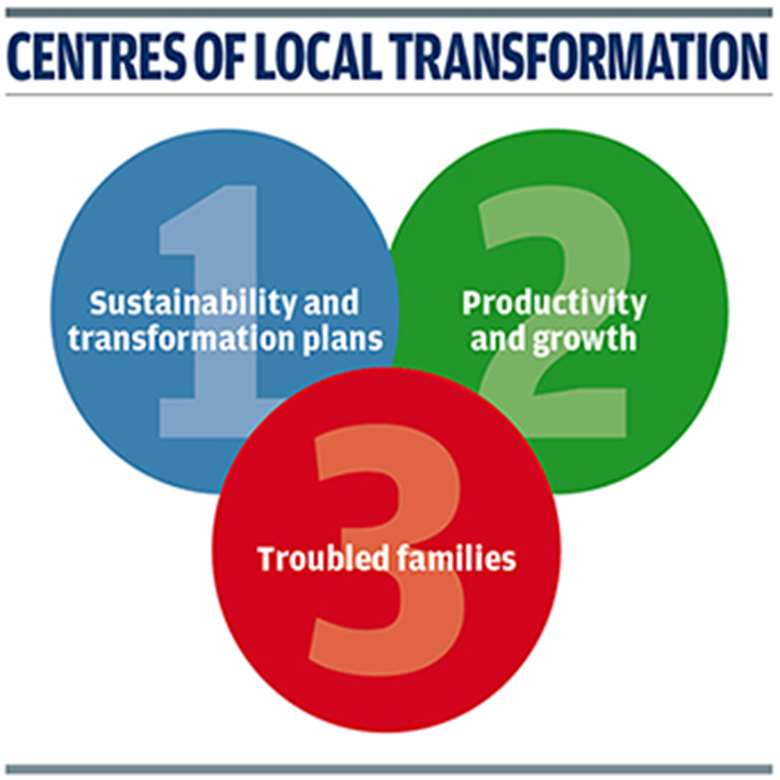Learning from Troubled Families
Richard Selwyn
Tuesday, March 27, 2018
How can commissioners use the Troubled Families programme to lead local transformation, asks Richard Selwyn.

There are just two years of funding remaining for areas working on the national Troubled Families programme. But instead of winding down activity, some local authority commissioners and partners are finding ways to deepen the influence of the programme.
The concept is to work with the most disadvantaged families in a local area, and through addressing the range of complex needs of the whole family, sustainably improve their outcomes. Since 2010, the number of families worked with has risen to nearly 300,000.
Impact
The pernicious, tangled effects of the challenges that families face are well known - poor adult mental health or substance misuse, domestic abuse and parental conflict, poverty and worklessness. There are signs that the Troubled Families programme is tackling these issues. The national impact study and annual report shows that following an intervention:
- Children were 13 per cent less likely to be in need
- Convictions and cautions fell by 10 and 25 per cent respectively
- Some councils report fewer children went into care
- A local evaluation found 98 per cent of families stayed out of their social care system for at least a year.
Local authorities are paid by the outcomes achieved with each family, incentivising a local focus on outcomes and helping the funding to flow to the frontline, be that in early help teams, social work, districts and boroughs, police, schools or health. However, in 2020 the national funding for the programme will end, causing commissioners to consider the implications and how to sustain impact on future families.
Post-2020 provision
Some local areas are pushing their Troubled Families programmes to go further and faster to improve outcomes, trying out new approaches so that the impact from services is sustained beyond 2020. Examples include:
Improving community resilience through testing different types of support that can be delivered by the community, such as relational training and family group conferencing. This blend of nontraditional interventions may make the difference for a family, keeping them from needing statutory services at all.
Supporting schools, children's centres and health visitors to work more closely with particular families, and have the confidence and expertise to build relationships and manage the cases in a whole-family approach.
Investing and recruiting to services that address the root causes of local families' needs, rather than the symptoms.
Developing common case management systems so each family experiences the ideal of one key worker and one plan, without needing to tell their story many times over. Local areas are also training a wide range of partner staff to have a common practice model, such as Signs of Safety or Restorative Practice.
Predictive analytics may help local authorities to provide earlier help and make the resource in the frontline go further.
Transformation
For local children's services leaders there is a further challenge. The transformation landscape is dominated first by work on sustainability and transformation plans (STP) which emerged from the NHS, and second by strategies for inclusive growth or local productivity. These two centres of service transformation are critical to the future of any local area, but there remains lower level need that is not always addressed.
Our early help and acute services only see the tip of the iceberg. Much of the demand remains hidden until needs escalate to acute services, and we simply don't have enough resource to look for these families and intervene at the earliest point. So how can we tackle these unmet needs?
This is one of the big challenges for the public sector. Over the next few years we will need local partners to work together to integrate access to services, share buildings, integrate data and join up services and the workforce. We will need to design a new spectrum of interventions from community resilience through to early help and up to the edge of acute services.
My suggestion to commissioners and local leaders is that Troubled Families is a good place to start this transformation. The experience gained from the Troubled Families programme of integrating services and teams, combined with recent innovations in data and technology, and the end of national funding, make this the ideal platform to transform public systems.
So, we might expect local Troubled Families programmes to morph into the third centre of transformation in your locality. Here we can accelerate change both horizontally across partners and vertically along the spectrum of support and services — making best use of resources from community resilience to the edge of acute services, and sustaining early help for families beyond 2020.
- Richard Selwyn is a member of the Association of Directors of Children's Services resources and sustainability policy committee @rjselwyn
FURTHER READING
- Troubled Families National Impact Study, Department for Communities and Local Government (DCLG), December 2017
- National Evaluation of the Troubled Families Programme 2015 to 2020: Early Findings, DCLG, April 2017
- National Evaluation of the First Troubled Families Programme 2012 to 2015, DCLG, October 2016




